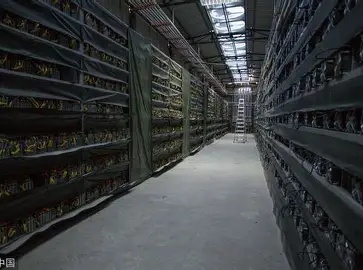The world of cryptocurrency mining has surged in popularity, with Bitcoin taking the lead as the most recognized digital currency. However, venturing into this arena requires careful consideration and understanding of the equipment involved, notably Bitcoin mining hardware. Whether you’re a novice looking to invest or a seasoned miner seeking an upgrade, knowing what to look for is paramount.
At its core, Bitcoin mining is a process through which new coins are created and transactions are verified. It requires potent computers, often referred to as miners, which perform complex calculations to solve cryptographic puzzles. The performance of these machines is measured in hashing power, typically represented in terahashes per second (TH/s). A higher hashing power signifies greater potential for earning Bitcoin, but also entails higher initial costs.

When selecting the right mining hardware, the first step is understanding the different types available on the market. ASIC (Application-Specific Integrated Circuit) miners are the giants in this field, designed exclusively for Bitcoin mining. Their specialized nature makes them far more efficient than general-purpose hardware, such as GPUs. As Bitcoin’s network difficulty increases, the need for efficient ASIC miners grows paramount. Models from reputable brands like Bitmain’s Antminer or MicroBT’s Whatsminer can deliver impressive performance.
However, enthusiasts interested in diversifying their mining efforts may consider mining machines that support other cryptocurrencies like Ethereum (ETH) or Dogecoin (DOGE). Different currencies may require diverse hardware solutions. For instance, GPUs remain top contenders for mining ETH due to their versatility, enabling miners to switch between various cryptocurrencies when market conditions shift.

Another crucial aspect of choosing mining hardware lies within the parameters of cost and return on investment (ROI). Establishing a budget is vital, as prices for mining rigs can range significantly, influenced by their capabilities. While spending more might yield superior performance, it’s essential to consider the electricity costs associated with running these machines. The profitability of mining isn’t solely based on the hardware; the energy it consumes can impact overall gains.
Mining farms, large-scale operations that deploy multiple machines, require detailed planning to maximize efficiency and profitability. These farms benefit from economies of scale, allowing them to reduce costs, but also demand greater logistical considerations—everything from cooling systems to ongoing maintenance. As such, exploring mining rig hosting options can prove beneficial for those who wish to leverage extensive setups without the hassle of managing the equipment themselves.
With the volatility of cryptocurrency markets, timing your investment can significantly affect your success. Researching market trends, understanding the demand for various coins, and staying informed about the overall network difficulty are all part of a successful mining strategy. Market fluctuations can dramatically influence which hardware remains effective and profitable, demanding a dynamic approach.
The method of mining can also influence the choice of hardware. Solo mining, where an individual attempts to solve cryptographic puzzles independently, can be high-risk due to increasing competition and difficulty. Joining a mining pool, where multiple miners share their resources and collectively solve blocks, can enhance the chances of earning consistent rewards while making the hardware choice less critical. This collaborative approach allows for steady passive income from mining without the hefty investment of time and money on advanced equipment.

Regardless of your initial choice of hardware, continuous monitoring, and adjustment is key. Keeping pace with technological advancements ensures that miners remain competitive. New mining models are regularly released, often featuring upgrades that can outperform older machines. As cryptocurrency technologies evolve, staying savvy with hardware options can dictate one’s degree of success in this captivating sector.
In conclusion, choosing the right Bitcoin mining hardware can be an intricate decision influenced by numerous factors, including cost, efficiency, and currency preferences. Whether you’re focused on Bitcoin alone or plan to branch into other cryptocurrencies, your hardware selection must align with your individual goals. As the landscape continues to evolve, remaining updated on hardware advancements and effective mining strategies will set the foundation for profitable mining endeavors.
Leave a Reply